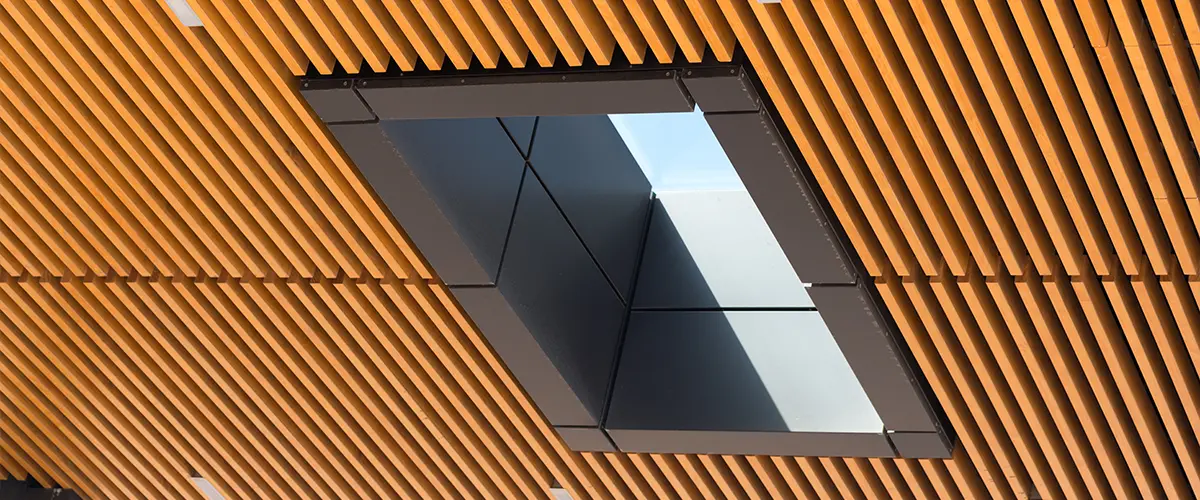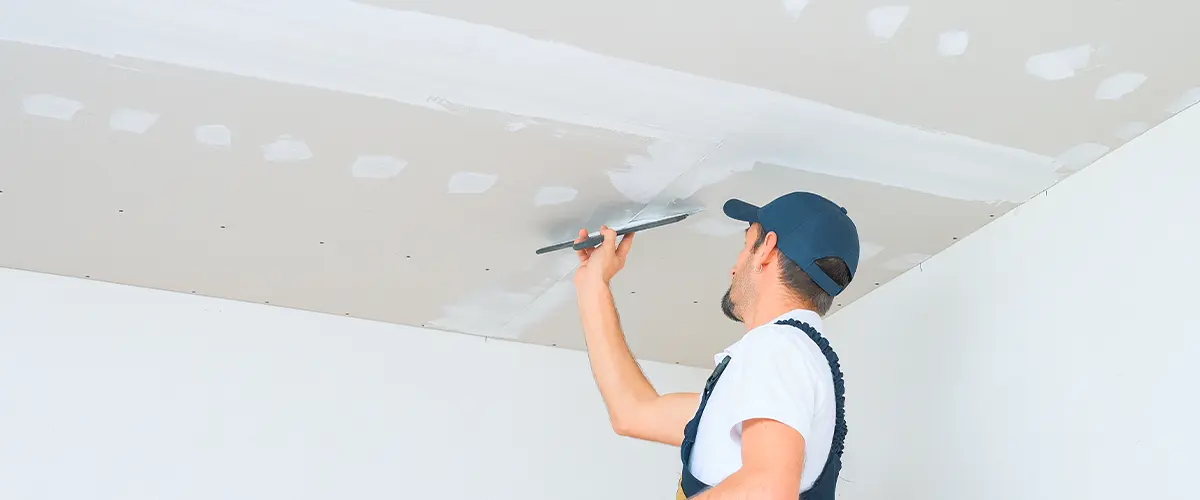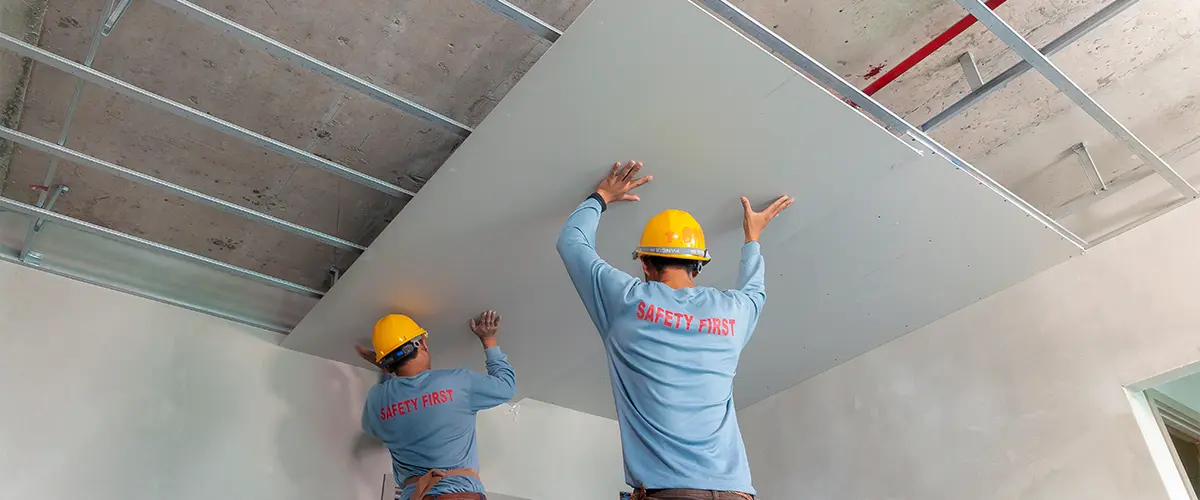Drop Ceiling Vs Drywall Basement: Which Is Better for Your Home?
Transforming your basement into a functional and stylish space starts with a key design decision: the choice of ceiling.
This seemingly simple choice between a drop ceiling and drywall carries significant implications for the aesthetics, functionality, and maintenance of your newly revamped space.
With each option offering distinct advantages and challenges, it’s crucial to weigh factors such as accessibility, durability, customization, and cost.
This comprehensive guide is designed to unravel the complexities of drop ceilings and drywall, empowering you to make an informed decision that aligns with your vision for the perfect basement.
Keep reading to find out more!

Differences Between Drop Ceilings and Drywall Ceilings
Appearance
Drop ceilings and drywall basements differ greatly in their looks. A drop ceiling, made up of panels or tiles, offers a smooth appearance that hides ductwork, pipes, and electrical junction boxes above.
This creates a clean line across the basement’s ceiling without exposing the underside of floor joists. Drop ceilings are versatile, allowing for easy access to the hidden utilities for repairs or upgrades.
On the other hand, installing drywall gives your basement ceiling a more traditional look similar to other rooms in your home.
Drywall sheets are fixed directly onto the ceiling structure which can make floor joists and mechanical systems less noticeable if properly finished.
Painting and texturing options with drywall provide a wide range of aesthetic choices to match any interior design style you prefer.
Options and Customizations
Drop ceilings offer a world of options for customization. You can choose from various ceiling tiles, ranging in color, texture, and pattern. This variety lets you tailor the basement’s look to your exact preferences, whether you want a modern vibe or something more traditional.
Adding ceiling lights becomes an easy task too; dropped ceilings allow for simple integration of lighting fixtures without complex wiring.
Drywall ceilings provide a smooth, seamless surface that acts as a canvas for paint or textures. While they don’t offer the same level of tile variety as drop ceilings, you can still customize with different paint colors and finishes.
Installing drywall gives you the chance to embed recessed lighting directly into the ceiling, creating a polished look that can make your basement feel brighter and more spacious.
Durability
Comparing the durability of drop ceilings and drywall in basements, it’s clear each has its advantages. Drywall is solid and offers a smooth finish that can last for decades if properly maintained.
It resists dents and scratches better than many alternatives. Suspended ceilings, on the other hand, are more susceptible to damage from water leaks or humidity. These conditions can cause tiles to sag or stain over time.
Suspended ceiling systems do have an edge in areas prone to frequent maintenance needs or updates.
Their design allows easy access to plumbing and electrical systems hidden above, making them a smart choice for basements where these elements may need regular attention.
Replacing damaged tiles is straightforward and less costly than repairing drywall, providing a practical advantage in long-term upkeep and flexibility.
Price
Drop ceilings are generally more affordable than drywall ceilings. The cost of materials and installation for drop ceilings tends to be lower, making them a budget-friendly option for finishing a basement.
Drywall ceilings may involve higher expenses due to the cost of materials and labor. It’s important to consider both upfront costs and long-term value when deciding between these two options.
Installing a drop ceiling can be an economical choice, especially if you’re working within a specific budget or looking to complete the project without overspending.
Conversely, drywall may require a larger initial investment, but it could potentially add more value to your home in the long run.
Ease of Installation and Repair
Transitioning from the cost factor to ease of installation and repair, it’s important to consider that drop ceilings are generally easier to install than drywall ceilings.
The modular nature of drop ceiling panels allows for straightforward installation without the need for specialized skills or equipment.
In comparison, while drywall ceilings offer a sleek finish, their installation is more complex and time-consuming. As for repair, individual damaged drop ceiling tiles can be easily removed and replaced without affecting the entire ceiling structure.
Drywall, on the other hand, requires meticulous attention to detail when it comes to repairing any damage such as cracks or holes. It involves sanding, patching, and painting which can be more time-consuming compared to replacing a single tile in a drop ceiling.

Pros and Cons of Drop Ceilings
- Installation is quicker compared to drywall.
- Drop ceilings are cost - effective and can be installed at a lower budget.
- Concealing wires and pipes is simpler with drop ceilings.
Pros and Cons of Drywall Ceilings
- Provides a smooth and uniform surface that can easily be painted to match any decor.
- Enhances acoustics by absorbing sound, making it ideal for home theaters or music rooms.
- Increases fire resistance and is more durable in the long run.
- Adds value to the property with a permanent and polished finish.
Choosing the Best Option for Your Basement Ceiling
In the quest to create the perfect basement space, the decision between a drop ceiling and drywall is more than a matter of aesthetics—it’s about aligning with your lifestyle needs, budget, and long-term plans for the space.
Whether you prioritize easy access to utilities, a sleek and seamless finish, cost-effectiveness, or durability, your choice will set the tone for the entire basement renovation.
By carefully considering the unique benefits and limitations of each option, you can make a choice that not only transforms your basement into a beautiful and practical extension of your home but also maximizes your investment.
Remember, the best choice is one that complements your home’s existing structures, meets your practical needs, and fulfills your aesthetic desires.

FAQs
Ready to Transform Your Basement with the Perfect Ceiling? Mortise & Miter is Here to Help!
At Mortise & Miter, we understand the importance of every detail in your basement renovation project, especially when it comes to choosing the right ceiling.
Whether you’re leaning towards the versatility of a drop ceiling or the smooth finish of drywall, our team of experts is ready to bring your vision to life with precision and craftsmanship.
Contact Mortise & Miter today to explore your options and start your journey towards a beautifully finished basement that meets all your needs. Let us help you make the most of your basement renovation project with a ceiling that perfectly suits your style and functional requirements. (913) 214-6211

